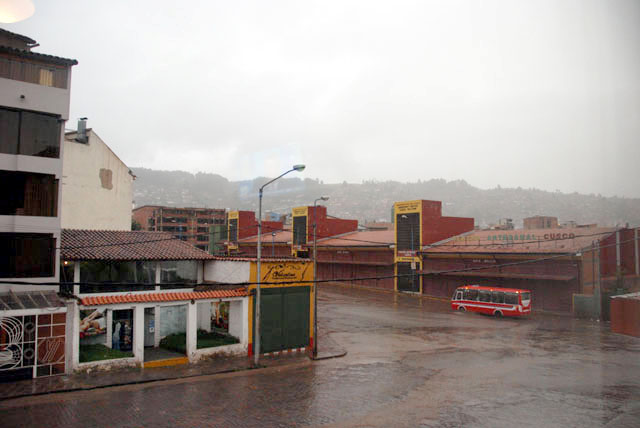
Along the Inca Road
March 29th, 2011 - Chinchero and the terraces of Moray
Morning came late for us on the 29th. It was nice not to head out at the crack of dawn to begin exploring.

The only problem was the rain. This view from the hotel window.
Heading towards the countryside
Today we were going to head to the Peruvian Highlands to see more archeological sites and visit a village a school. At least we would be in the bus for most of the day though it would have been nice if the weather had cooperated a bit more. But, when on vacation take the weather as it comes.

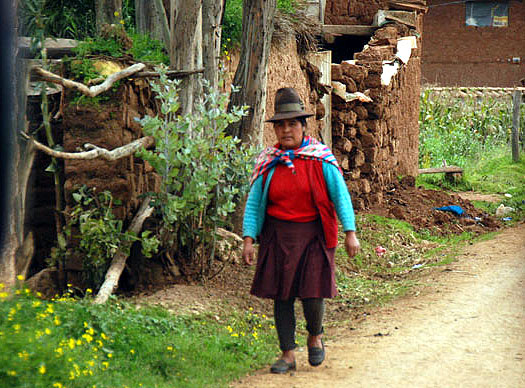
Once outside of Cusco the weather improved and we saw more people in the farming areas doing their daily chores. Potatoes are the main crop and it was the potato harverst that was going on. The hats? Women wear the various fedoras and derbys to indicate from which town or valley they are from.
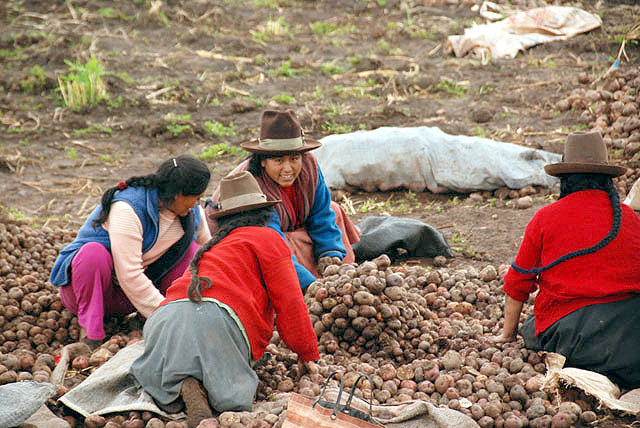
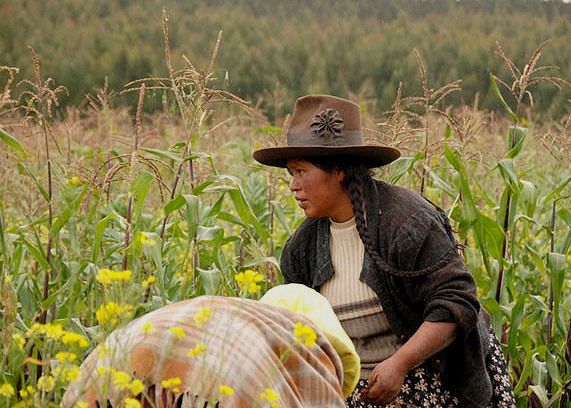
A tall white fedora indicates the woman lives near a glacier in community or village near the snow line. As we neared the town of Chinchero we started seeing more variety in women's dress, even those women working in the fields.
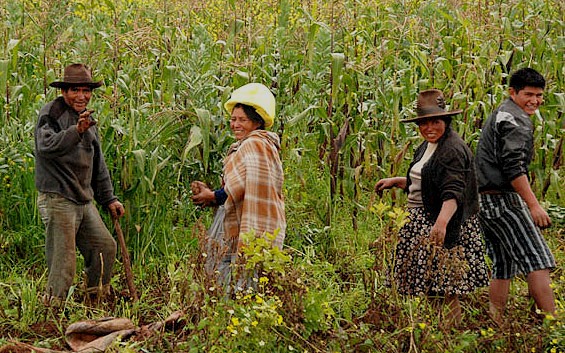
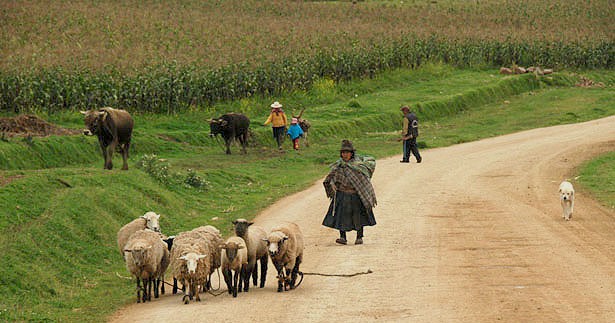
Harvesting potatoes and driving stock to pasture.
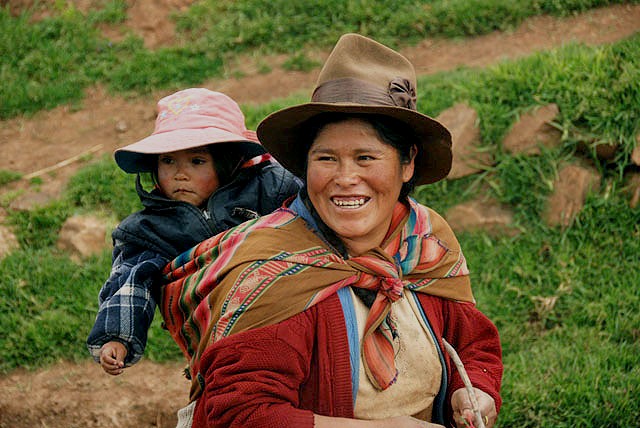

The shawl is used for a variety of uses, carrying a little one or simply packing items. Note the hat styles here.
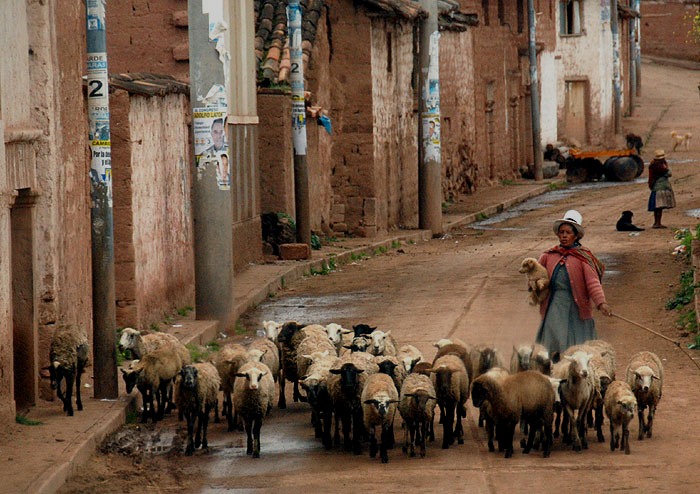
Sheep and llamas are important family items. Notice the sheep dog pupin training. The flock's owner is carrying the puppy so it gets used to the sheep and will eventually know how to wrangle the sheep when it gets older.
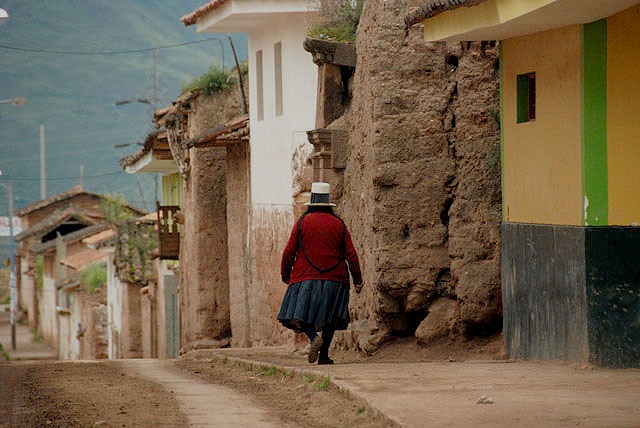
This woman's hat tells us she's from a high mountain town. We were now in the village of Maras. The town is noted for its salt pans or terraces but our goal was further down the road in Moray.
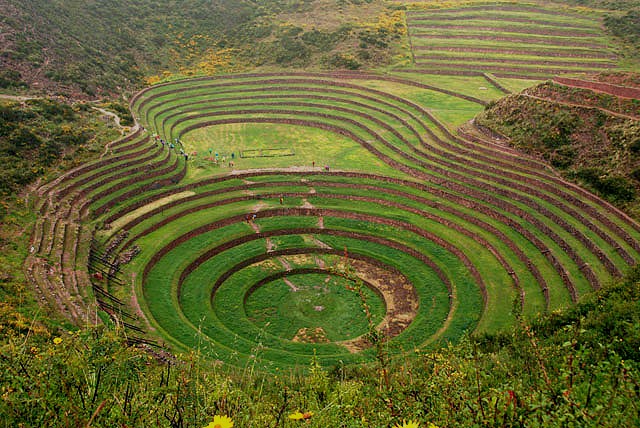
Moray Inca Terraces
This was the site of an Inca agricultural laboratory. Located over 10,000 feet above sea lever, the Incas created a series of terraces in the natural depression. The various levels were then used to grow a range of crops including tropical items such as pineapples and other semi-tropical crops. The Inca also brought in soil from the lower elevations and filled the terraces with the appropriate soil for the item being grown. The temperature difference from the top to the bottom rings is around 40 degrees, enough of a temperature difference to grow a range of crops at one time.
Unfortunately the rain cut short our visit to this site so we proceeded to the town of Chinchero for more exploring. Our visit to a weaving co-op and elementary school was indeed educational and colorful as well.
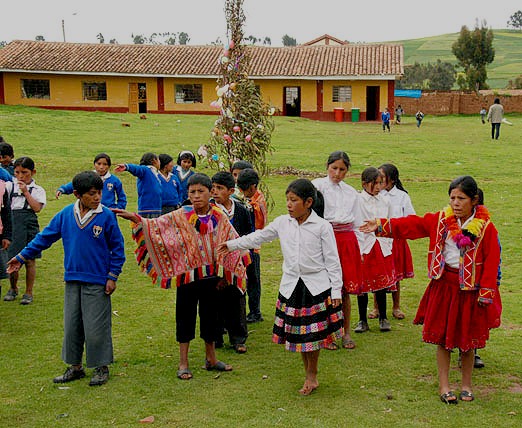
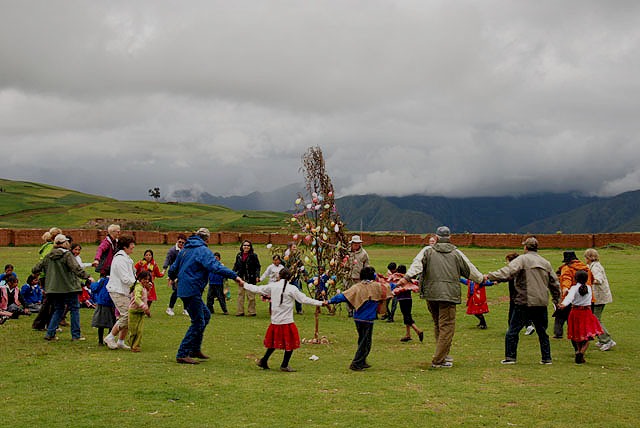
The elementary students included our group in a local custom, the gift tree. One dances around the tree (which is placed in the field) and trys to cut it down. Once the tree is cut down everyone races to fetch a prize which has been hung on the branches of the tree.
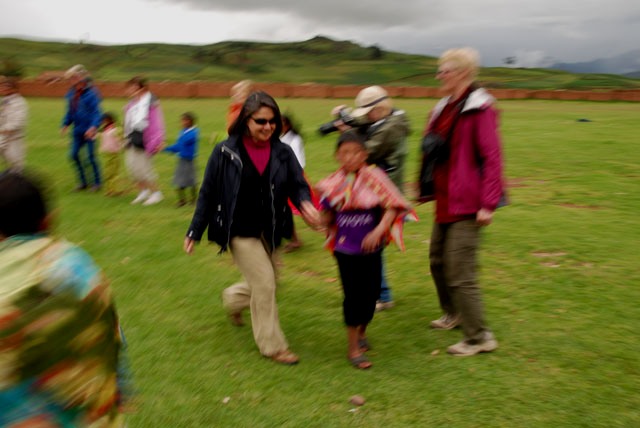
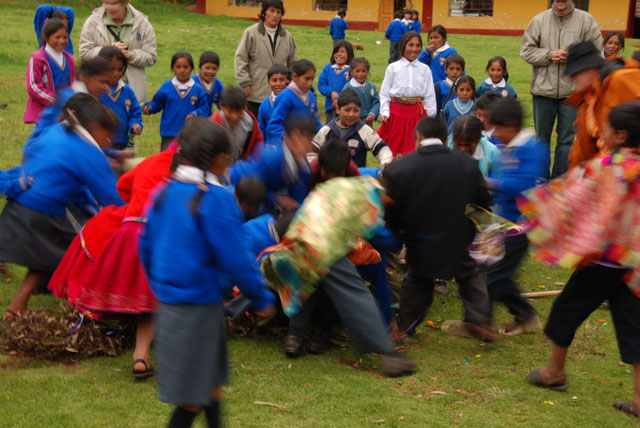
Joan does her dosey-do and then the tree came down and the kids rushed in for their prizes.
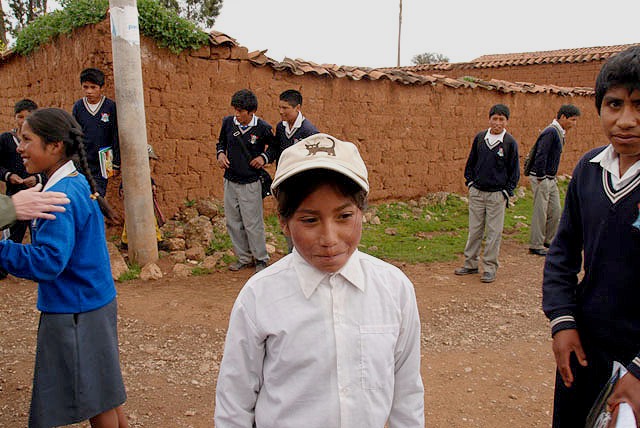
Hats for the Highlands
One disturbing thing we did discover during our visit to the school was the effects of global warming on the peoples living in the highlands. Because of the elevation school children are exposed to harmful ultraviolet radiation which an burn the skin in minutes. Our group distributed baseball hats to the kids and when this young girl did not receive a cap I gave her my "Basil" baseball cap. This disturbing trend which is affecting the health of thousand of people, not just children, has been identified by the Peruvian government. In the meantime, though, caps and hats are needed for all students, especially those living in highlands.
Chinchero
We finally made it into Chinchero where we had a great meal at a weaving co-op. After lunch the various weavers showed us how they clean the raw wool, spin it into yarn, dye it and then, using various looms, weave a variety of articles.
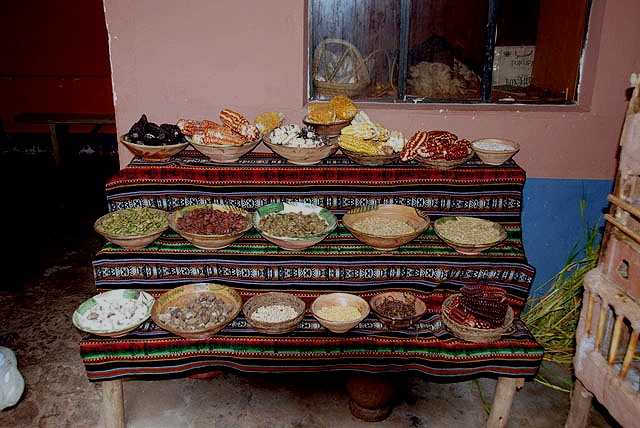
Grains which made up our lunch that afternoon.
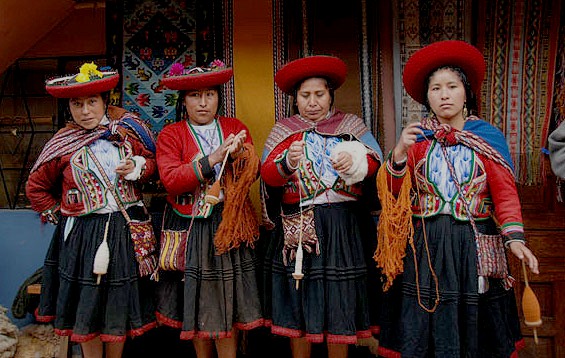
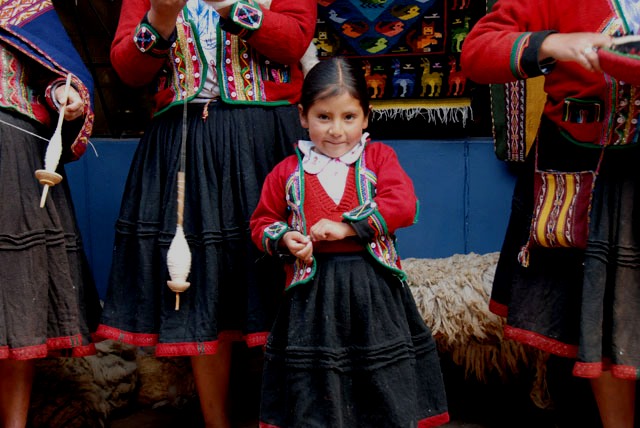
The weavers of Chinchero.
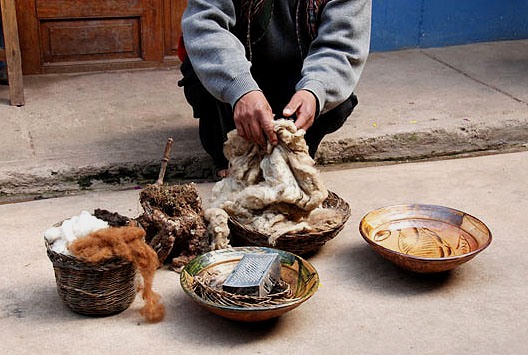
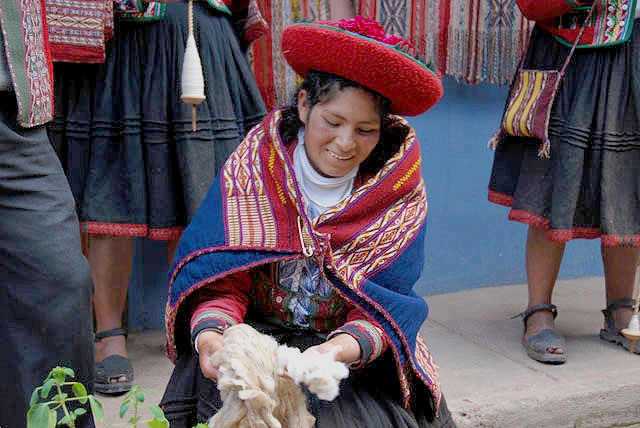
Taking raw wool and washing it clean with soaps made from plant roots.
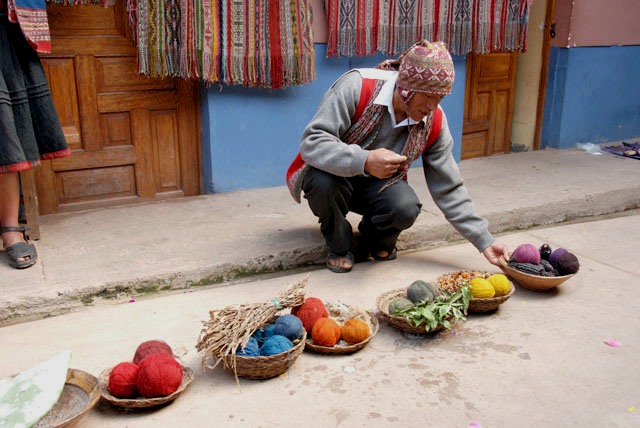
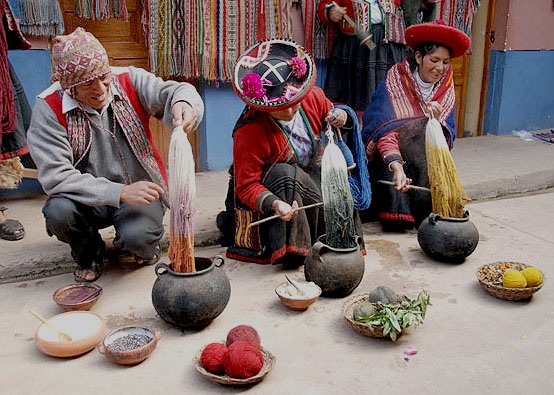
The various dyes produced from plant materials and staining the yarn.
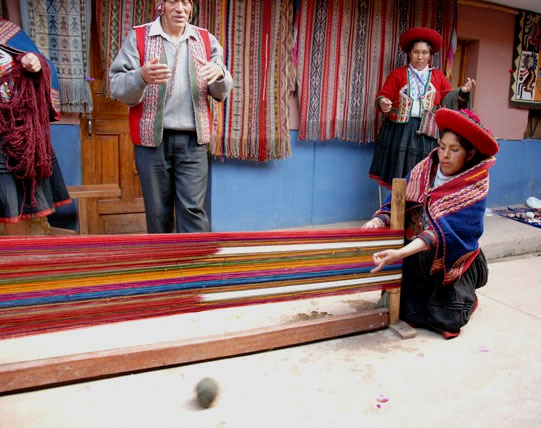
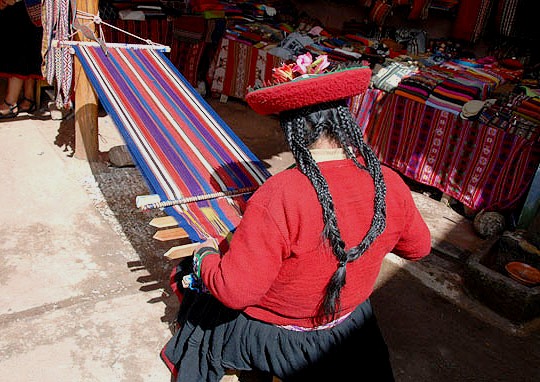
Two types of looms. Noticed the multiple braids the lady on the right is wearing. The braids are worn by married women and indicate what village the women is from.
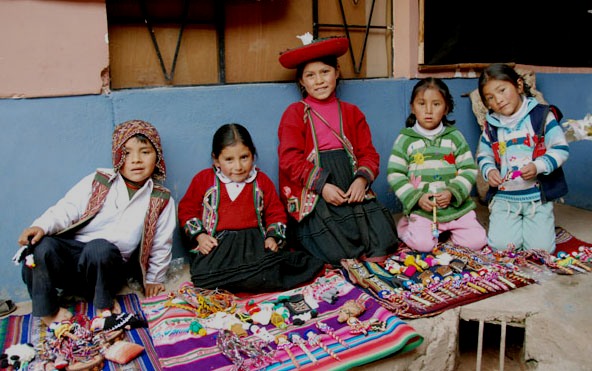
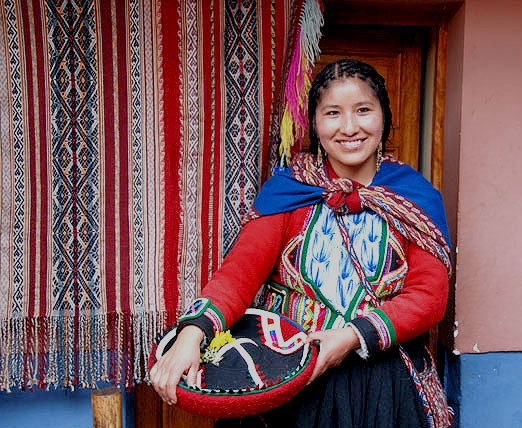
Children learn how to weave at an early age; and sell their wares. Lucy, one of the weavers who explained the various processes to us.
The co-op allows the women to earn a living and improver their weaving skills at the same time. All proceeds are put back into the co-op and there is also a reserve that is kept on hand in case someone may need extra money for emergencies.
By the end of the day we were ready to head back to Cusco. The rain finally let up in the afternoon and as we headed back to Cusco we wondered what would be in store for us tomorrow.
More Galván Trips & Travel Posts
Copyright 2011 Anthony Galván III